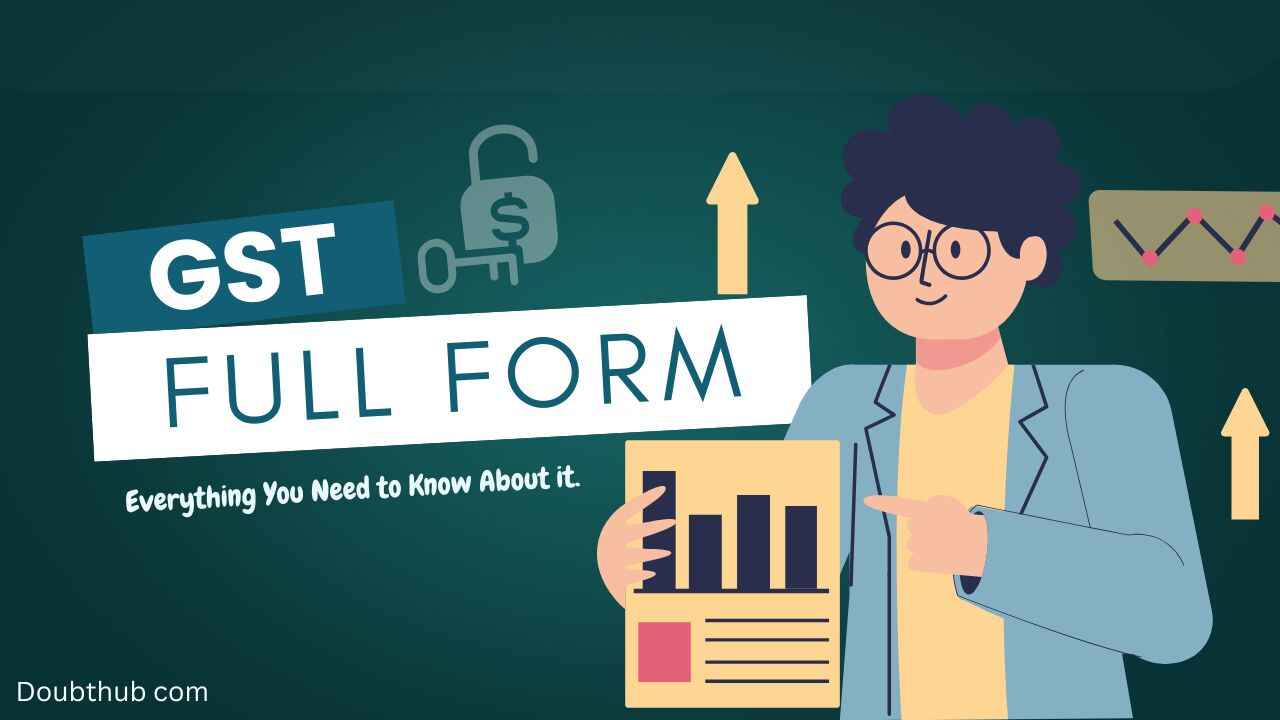If you do business or shopping in India, you must have come across the term GST. However, do you truly understand what it GST Full Form , how it functions, and what new rules are coming in 2025?
In this article, we will walk you through everything you need to know about GST (Goods and Services Tax), from its basics to the latest updates. By the end, you will have a clearer understanding of the tax system and its impact on businesses and consumers alike.
Table of Contents
What is the full form of GST?
- Goods and Services Tax
If you’ve heard that GST has transformed the tax system, you’re absolutely right! GST, or “Goods and Services Tax,” is an indirect tax that has replaced multiple taxes, including service tax, VAT, and excise duty.
What is GST and how does it work?
In simple words, GST is a tax which is levied at every level of anything, from manufacturer to consumer. But it has the concept of input tax credit, which reduces the tax burden of the business.
Think about it—when a business buys raw materials or a person purchases a car, the government applies GST. Later, when the final product is sold, the seller charges GST again. However, the system adjusts the previously paid GST, eliminating double taxation. Ultimately, the tax applies only to the value added, ensuring a fair and transparent system.
read more- Know the difference between CST Tax System and GST Tax System
Why is GST important for business and consumers?
If you are a business owner, you must know that earlier every state had its tax system. This used to be very confusing. GST has brought everyone under a single system, making compliance easy.
It benefits consumers as well because it eliminates the hassle of hidden taxes. Previously, excise duty, VAT, and service tax were all applied to a single product, driving up the price. . Now there is a single tax rate which makes the pricing transparent.
How many types of GST (full form)?
There are 4 types of GST:
- CGST (Central Goods and Services Tax) – Levied and collected by the Central Government. SGST (State Goods and Services Tax) – Levied and collected by the respective State Governments. IGST (Integrated Goods and Services Tax) – Applied to inter-state transactions and collected by the Central Government.
- UTGST (Union Territory Goods and Services Tax) – Applicable to Union Territories instead of SGST.
How to Calculate GST?
If you want to understand the calculation of GST, then remember this simple formula:
GST Amount = (Original Price × GST Rate) / 100
Final Price = Original Price + GST Amount
For example, if the price of a product is ₹2,000 and the GST rate is 18% then:
- GST = ₹2,000 × 18 / 100 = ₹180
- Final price = ₹2,000 + ₹180 = ₹2,360
How to do GST Registration?
If your business has a turnover of more than ₹15 lakh, you must register for GST. You can complete this process online on the GST portal. (gst.gov.in).
Steps:
- Go to the GST portal and select the option of “New Registration“
- Fill in the Business details, like PAN, state, and business type.
- Upload documents, like Aadhaar, PAN, and address proof.
- Verify OTP through mobile and email.
- After approval, you will get GSTIN number.
Benefits of GST For both Business and Customers
- With the advent of GST, the tax system has become simple. It has some important benefits:
- One single tax in place of multiple taxes
- Same tax rate everywhere, which makes interstate business easy
- Tax evasion is reduced, because everything is tracked online
- Composition Scheme for small businesses, which allows lower tax rates
GST Myths vs. Reality
People have many misconceptions about GST, like:
- GST has increased the tax – No! One gets the benefit of input tax credit, which reduces the total tax burden.
- Even small shops will get caught in GST” – Wrong! Businesses below ₹20 lakh (or ₹40 lakh) are exempt.
- GST is imposed on everything – Not on everything! There will be lower or zero GST on essential items.
Future of GST | What changes can come in the future?
GST is going to become easier in the coming time. Some new improvements can be made:
- Return filing will become easier, even for small businesses*
- GST can be reduced on essential items
- Plan to bring E-invoicing for all businesses
Final Thoughts of GST full form
GST is a game-changer that makes the tax system easy, transparent and fair. Whether you are a business owner or a consumer



